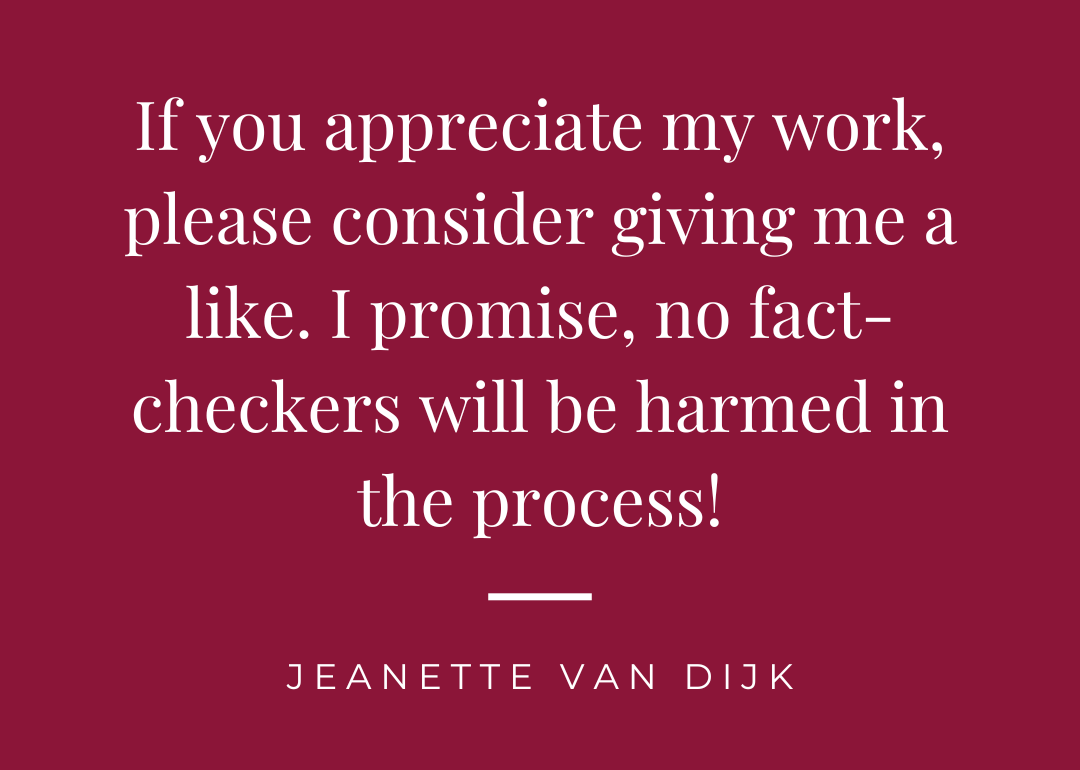Why You Can’t Debate with a Demoralized Mind
Part 2 of the Indoctrination Series
Jacques Louis David, The Death of Socrates, France 1787
In 399 BC, the Stoic Socrates was condemned to drink the poison chalice for corrupting the youth of Athens by teaching them to think for themselves.
In the first part of this series, we mapped the five telltale signs of an indoctrinated person. We discussed some handy tools to tiptoe around these people and find your exit before you’re swallowed whole. And while it can be mildly entertaining to spar with people who only repeat slogans, you will discover that the discussion hardens fast and can turn dangerous once demoralized minds enter the room. That’s what we will discuss in this article.
Demoralization is the mature version of indoctrination. It’s the stage where critical thinking has shut down altogether, arguments no longer work and the armor against facts is thicker than concrete. Demoralization is more than someone holding a strong belief. They have shut down every alternative, replaced dialogue with defense and turned dissent into danger.
In their eyes, you are not just wrong. You are dangerous for being wrong.
This second article dives into that shift. We will follow indoctrination as it hardens into demoralization, splintering between militant certainty and silent surrender. It’s here that debate dies, identity rules, and danger begins. Let’s unravel the mechanisms behind demoralization: how thought decays into defense and why the outcome can only be fanaticism or surrender.
The Art of Demoralization
The Origins
The use of demoralization techniques to break your opponent’s will is as old as war itself. It’s psychological warfare, intended to crush morale before the first shot is fired. Through the years, armies have perfected the craft. By combining exhaustion, relentless propaganda and constant pressure, they convince enemy soldiers the war is already lost, enabling victory without much fighting.
In 1984, the former KGB agent Yuri Bezmenov made the concept famous when he described how the USSR used demoralization to ideologically subvert Western societies. According to him, it would only take a single generation to demoralize a society and create citizens so confused they can no longer distinguish fact from fiction, truth from propaganda and even safety from repression. He argued that, once demoralization takes hold, the immune system of a culture shuts down and no amount of evidence can bring clarity back.
We will return to the societal consequences of demoralization later in the series. Here, I want to talk with you about demoralization on a personal level: How do people reach that point where the approved narrative is the only truth left, even when their own eyes register something entirely different? Why do people stay silent when injustice stares them in the face? And since when has it become acceptable to cheer the murder of someone simply for not sharing your beliefs?
Let’s find out!
The Demoralized Person
On an individual level, I would define a demoralized person as follows:
A demoralized person is someone who has internalized a prescribed narrative so deeply that it has become part of their identity, shutting down critical thought altogether and turning every challenge of that narrative into a personal attack.
Where the indoctrinated person is still running an external script complete with slogans and approved sources, the demoralized person has become the script. The narrative is no longer external but fused with the self. Questioning the idea is treated as questioning the person. And so the narrative becomes a matter of survival.
The clearest sign of a demoralized person is the fervor with which they defend their statements. You post an argument and what comes back is an emotional overreaction, wildly out of proportion to the argument itself. They will not even consider your reasoning. To them, your words are the proof that you are dangerous. The response is never factual. Instead, you are branded a Nazi, a Fascist, or accused of sleeping with the enemy. To the demoralized mind, the argument is already so obviously false it deserves no attention. But by voicing it, you have become the enemy.
Why Demoralization Is Different from Indoctrination
Demoralization is often mistaken for indoctrination, as if it were just a more severe case, but they are not the same. Indoctrination is the stepping stone to demoralization.
The indoctrinated person is still running an external script. They attack your arguments with rehearsed slogans, cling to the authority of experts and cite the approved sources. Push back and argument gives way to feelings and personal anecdotes; things that can, of course, never be wrong. When confronted, their response is often dismissive or mocking. You are treated as naive, misguided or simply uninformed. Imagine indoctrination as a virus: you can get infected, even seriously ill, but you can still fight it off and recover.
Not so with demoralization. Here the narrative has been internalized, as if the virus had taken root in their very identity. Your arguments are not even considered and to question the narrative brands you a traitor. Alternatives are not weighed; they are not even seen. When confronted, a demoralized person will not simply dismiss you, but lash out with hostility using your arguments as proof of your malice. You don’t get a debate. You get a trial and the verdict is already written: Nazi, Fascist, traitor or whatever fits their mood.
The easiest way to distinguish whether you’re dealing with an indoctrinated person or a demoralized one is their attitude towards you: the indoctrinated treat you as a fool; the demoralized treat you as a threat.
How Demoralization Emerges
Demoralization doesn’t just happen overnight. It is the result of unrelenting pressure and propaganda that wear down judgment, rewire perception, and ultimately invert morality. Below I will outline three of the main drivers. Each of them could fill a book on its own, but for the sake of space I will only sketch their contours here. They will return later in this series, illustrated with concrete examples. Let’s take a closer look.
1. Cognitive Dissonance Overload
The first driver is that your brain is flooded with contradictory information. You are told one thing, yet you see another and the clash keeps repeating. Every time your eyes and ears disagree with the approved narrative the tension grows, especially when questions or doubts are met with ridicule. Most people can’t live long in that state of constant dissonance. Eventually, something has to give.
The pressure usually breaks at the weakest point: trust in your own senses. When you are told often enough that what you see is not what you see, eventually you start making adjustments. The endless repetition of the same narrative chips away at your confidence until even the most basic judgments feel uncertain. Doubt creeps in: maybe the narrative is not wrong, but I am.
When every contradiction is answered with the same repeated line, the mind eventually surrenders. The constant rehearsal of the narrative wears down the ability to judge independently, until even obvious facts feel uncertain. This is what philosophers call a breach in epistemic trust: the basic belief that you are able to tell truth from falsehood at all.
Once that doubt has taken root, social pressure does the rest. The fear of being mocked, isolated or cast out triggers the survival instinct. Conformity feels safer than resistance. You stop asking whether the story is true; you assume it must be. And then comes the final turn: you join the chorus that mocks those who still trust in their own senses.
2. Exclusion and Intimidation
Social exclusion is the way the indoctrinated and demoralized punish you when you are not willing to surrender your mind. Knowing full well their arguments do not hold up in court, they have developed extensive methods to oust you out. The first line of enforcement usually comes from the indoctrinated. They are not yet hardened enough to treat you as an enemy, but they will still correct you. It comes as a mocking remark, a dismissive laugh, a lazy label thrown in your direction. These are warning shots. At this point the goal is not to destroy you but to ridicule you in the eyes of others, trying to make you doubt yourself. The pressure is light, but persistent.
The second line of enforcement comes from the media and tech companies. What begins as ridicule now turns into exclusion. Your posts are suppressed by algorithms or shadow banned. Suddenly, messages appear under your latest post that you are distributing misinformation accompanied with a link to the correct narrative. Your posts are deleted, your accounts cancelled and your voice censored. If you have managed to build some kind of public profile, media steps in with their own profiles of you, actively manipulating the image people have of you. Your world shrinks as your professional reputation is chipped away and your defense is actively silenced. Most people give up here, the cost of dissent too high to continue any longer.
The third stage begins when you refuse to back down or when your voice carries enough weight to be seen as dangerous. That is when the demoralized step forward. You are no longer considered to be mistaken; you are considered a threat. You start receiving death threats. Online mobs coordinate DDOS attacks on your website and social media. Coordinated harassment overloads your inbox, your cloud storage is hacked and private information is exposed to the world. Your private address, phone numbers and family details are doxxed. Eventually, what started as online harassment spills into the real world: loved ones are followed home and harassed. Photos taken at a schoolyard are posted publicly. Protesters appear at your door; threats move from comments to direct messages and physical confrontations become possible.
What begins as intimidation to nudge you into conformity, escalates into real danger if left unchecked. What we will see next is that when demoralized minds are not kept on a tight leash, violence will follow.
3. Moral inversion
In this third stage, you cease to exist as a person and become a symbol of all that is evil in the world. Everything you say is labelled dangerous, everything you do is taken as proof of your evil nature. You are deliberately dehumanized and demonized. That switch matters, because our brains, steeped in millennia of superstition, are wired to hunt the devil in our midst.
By this time, media and high-profile voices push only one narrative: you are dangerous and you must be silenced, whatever the cost. People who have never met you freeze at the sound of your name. Your name incites hatred and violence is quickly reframed as a necessary measure to stop a greater harm.
Once these moves are in place, the crowd dynamic changes. Public shaming becomes ritual. You are always wrong, even when you are right. Groups appear at your door not merely to intimidate, but to enforce their will through physical assault. Media coverage excuses the perpetrators and offers moral cover, explaining that the violence was your fault: you are presented as the malice that provoked the reaction.
That licensing of violence is the final step. People stop questioning proportionality or justification; they cheer the violence and applaud whoever has the courage to remove this latest symbol of evil.
And then comes the bullet.
The Two Faces of Demoralization
There is no middle ground when it comes to demoralization. No neutrality, no objectivity. Once critical thinking shuts down, collapse always tilts to one of two extremes: either the broken will of silence (flight) or the militant certainty of fanaticism (fight).
Demoralization is also not bound to one side of the political spectrum. Its outcomes are psychological, not political. Any ideology can breed them, from the far left to the far right, from religious zeal to secular dogma. The faces may change, the slogans may differ, but the pattern is identical: when the ability to distinguish fact from fiction dies, people either surrender or they attack.
1. The Broken Will
Flight is what most people retreat to when their minds can no longer hold the pressure: they become passive, uncaring, uninterested in anything except their own small little world. These are the people who stopped believing they can make a difference, who replaced curiosity with cynicism and who stopped trying “because nothing will ever change.” Look them in the eyes and you will only find a void where love and joy used to reside. They’re no longer alive, they survive.
A horrifying example of what the flight response looks like in practice was the recent murder of the Ukrainian refugee Iryna Zarutska. She was stabbed to death on a full light rail in Charlotte. Many passengers witnessed the attack but froze, unable or unwilling to act until the train stopped and police could arrest the perpetrator on the platform.
But demoralization is not only physical, it’s moral as well. We’ve all met those people who tell you privately or off the record that they agree with everything you say, but will never admit it publicly because their inner circles would not tolerate dissent. These people are more afraid of losing their social position than they are of losing their own authenticity. Demoralization has made them so numb, so conditioned to fear the judgment of others, that they prefer to live in a lie rather than risk standing in the truth.
This is what flight really looks like: not only failing to stand up for others, but also failing to stand up for yourself. A society that has reached this point no longer needs censors or police to silence dissent. People are quicker to censor themselves.
2. The Militant Certainty
If flight is surrender in silence, fight is the noise of militant mobs: loud, relentless and uncompromising. These are the people who no longer argue because they already know everything there is to know. They don’t listen, they don’t doubt, and they have no moral objections to taking justice into their own hands because they believe themselves above the law.
The fight response is the kind of demoralization that hits the news: professors shouted down by their students for not being ‘woke enough.’ University buildings wrecked in the name of moral causes on the other side of the globe. ‘Peaceful protests’ that mainstream media kept praising while entire neighborhoods burned in the background, stores were looted and cars set on fire. And these are still the mild examples, because at least they let you walk away alive most of the time.
The militant form of demoralization does not need much to turn violent. They’re the Antifa groups waiting outside your door to knock some sense into you, or turning up as counter-demonstrators to escalate any rally that conflicts with their beliefs. It’s the murder of Charlie Kirk, shot with bullets inscribed with slogans like “Hey fascist, catch.”
But violence is not confined to the left side of the political spectrum. Let’s not forget the Norwegian Anders Breivik who murdered 77 youngsters on a social democratic camp in 2011, or the attack in Christchurch, New Zealand in 2019 where 51 Muslims were brutally murdered when going to their mosque.
Fascism is party-blind. It’s not left, nor right. The ideology may differ, but the psychology is just the same: once demoralization hardens into fight, deviation becomes treason and traitors must be punished in the name of the highest good.
3. The Silent Pact
Fight and flight may look like opposites, but together they form the perfect machinery of demoralization. The fighters shout, threaten and intimidate; the flighters look away, nod and keep quiet. One side enforces, the other side legitimizes. Without the silence of the many, the noise of the few would never carry so far.
You don’t need re-education camps or gulags when a population reaches this stage. Censorship becomes redundant, because people already censor themselves. Violence becomes acceptable, because the crowd has already decided the victim had it coming. Step by step, a culture cleanses itself of dissenting voices until all that is left is conformity, paranoia and fear.
Yuri Bezmenov warned back in 1984 that once ideological subversion has reached its final stage, no amount of evidence or reasoning can reverse it. At that point, only a shock from the outside such as military defeat, regime collapse or foreign intervention can break the spell. Where Western societies stand on that spectrum will be the subject of a later article.
What Can We Do Against Demoralized Individuals?
The short answer: almost nothing. Demoralization is not something you fix with patience or polite debate. Once the narrative has fused with the self, there is no reasoning left to reach. You don’t cure fanaticism with facts.
The only thing we can really do is refuse to normalize it. Violence must never be accepted as a righteous means to an end. The moment intimidation or bloodshed is excused with moral cover, the fight is already lost. We must also call out those who look away when injustice unfolds in plain sight. In this equation, silence is just as deadly as violence. Flight and fight together create an atmosphere that cripples a society. That leaves pushback as the only viable option.
You cannot deprogram individuals once they are demoralized. But you can resist their logic, reject their silence and refuse their violence. The antidote lies in the rest of us: to stand firm together on our common ground, instead of letting ourselves be divided against one another.
Next time, we’ll explore how language has already become the sharpest weapon of demoralization and how speech itself is turned into the most efficient tool of control.
The future you fear is already here. Recognize the script before it writes you out.




